This November (and a little of December), we’re taking a trip back in time to review the third season of The X-Files and the first (and only) season of Space: Above and Beyond.
Stardust was the second episode of Space: Above and Beyond to air on a Friday, as had originally been planned.
Of course, it was too late to help the show. By this point in its run, Space: Above and Beyond was a dead show walking. Stardust seems to wryly acknowledge as much. It opens with an inmate on death row, watching the clock tick down to midnight. The show is essentially about sacrifices made by the already-dead, and it’s hard not to get a sense that it captured the mood of the staff on the show as well. A wry wink at the audience, like all the introspective reflection in the earlier episodes.
It is also interesting how Stardust positions itself as a possible companion piece to The X-Files. The X-Files casts a pretty significant shadow over Space: Above and Beyond. It was very much an attempt by Fox to capitalise on the success of The X-Files as a genre show. It drafted in two of the most reliable executive producers working on The X-Files. The first two episodes were directed by a veteran of The X-Files. David Duchovny had popped by R & R as something of a goodwill ambassador.
Space: Above and Beyond had played with these comparisons before. The Farthest Man From Home had teased a conspiracy narrative about alien and government cover-ups. Level of Necessity featured a riff on Mulder, with a tall dark-haired paranormal investigator wandering into the show. Stardust makes the connection more explicit, riffing on some of the themes that The X-Files had pushed to the fore at the end of its second season and into the third, exploring links between Native Americans and extraterrestrials.
To be fair, one can feel the influence of The X-Files on Stardust even before the opening credits roll. Rather unusually for the show, Stardust opens on Earth – in a prison, on death row. This is a setting that feels much more at home on The X-Files than it would on a show like Space: Above and Beyond. In fact, The X-Files had already done two episodes featuring death row. Beyond the Sea was the story of a death row inmate with mystical visions. The List was the story about an executed criminal seeking supernatural revenge.
With a central mystery driving the plot, Stardust feels very much like an episode of The X-Files that got ported over and filtered through the lens of Space: Above and Beyond. Shirley Walker’s soundtrack even adjusts, offering something that feels a little bit more like the music of Mark Snow than the show’s traditional old-fashioned bombast. There are cover-ups and secrets and misinformation scattered throughout Stardust, as the show engages more directly with conspiracy culture than it has at any point previously.
Of course, there were earlier flirtations. Introduced in The Farthest Man From Home, Sewell initially seemed like a poor knock-off of the Cigarette-Smoking Man. Choice or Chance ended with Sewell receiving a briefcase full of mystery, with a haunting purple glow. Although this seemed like vague mystery for the sake of vague mystery, The Angriest Angel casually revealed that it was actually confiscated alien fuel, before ruthlessly killing off Sewell. It seemed like Space: Above and Beyond was subverting expectations and potential comparisons.
This is perhaps most obvious in the structure of the season. Like the second through to sixth seasons of The X-Files, Space: Above and Beyond was built to capitalise on network scheduling – specifically the “sweeps”, the times when Neilsen ratings were used to set advertising revenue for the months ahead. The X-Files had figured out that doing big conspiracy-driven blockbuster two-parters worked very well, and Space: Above and Beyond follows suit.
This was most obvious with the show’s first two-parter, Hostile Visit and Choice or Chance. The show was very much trying to construct a two-parter based around its own central mythology – featuring a captured enemy ship and a Silicate mining camp, a very plot-driven two-parter that seemed like an attempt to force various plots forward. Most obviously, it was Kaylen’s last appearance before the end of the season. It was very much trying to be a two-part X-Files mythology episode, right down to the ominous closing scene, but didn’t quite work.
In contrast, the show’s second two-parter, Never No More and The Angriest Angel, seemed more comfortable in its identity. Although it included several elements that build and expanded the mythology, they were very much in the background. Never No More and The Angriest Angel played as two distinct stories linked to one another by theme and certain plot elements carried over. Although airing alongside Piper Maru and Apocrypha, it felt like something unique to Space: Above and Beyond, rather than something intended to mirror a successful element of The X-Files.
At the same time, Space: Above and Beyond was engaged with nineties conspiracy culture. Eyes featured the same skepticism of authority that had made The X-Files one of the defining television shows of the decade. It suggested that certain vested interests had concealed knowledge of the alien adversary from the public. Similarly, Elroy-El offered cryptic hints of some long-established bond between mankind and the aliens in both Choice or Chance and The Angriest Angel.
“They’re very experienced at watching you,” Elroy-El teased McQueen in The Angriest Angel. “They’ve done it for a long, long time. You wouldn’t believe how long.” It harks back to the closing line of Deep Throat, the second episode of The X-Files. There, Mulder’s informant had teased him, “Mister Mulder, they’ve been here for a long, long time.” The show would suggest that the aliens had indeed been there for quite an extended period.
Stardust explicitly ties these secrets into Native American mythology, mirroring revelations that occurred in Anasazi, the second season finalé of The X-Files. There, The X-Files suggested that extraterrestrials had been visiting Earth for thousands of years. Later episodes like The Red and the Black would suggest that the colonists had a much longer and deeper history with the planet Earth, reaching back to before the last Ice Age.
Stardust makes a similar connection within the larger mythos of Space: Above and Beyond. Searching backwards into World War II – another concern of The X-Files, particularly in its third season – McQueen makes a startling connection. “While looking into the Second World War, I found something else. Operation Naye’i. ‘Naye’i’ is a Navajo word for ‘alien gods’.” It is a very clever way of tying together ancient conspiracy theories with the Second World War, much like The X-Files had done.
McQueen notes how strange it is to plant fake documents in a language that the Japanese could never crack during the Second World War. “For disinformation to be effective we would want the Chigs to crack the code,” he notes. “Why would the code be written in a language that even other people on Earth couldn’t crack? Unless we knew the enemy was familiar with the language?” The implication – though left unspoken – is obvious. The enemy is perhaps not as alien as they might seem.
It is worth noting that The X-Files did not have a monopoly on any of these ideas. It does not seem likely that Glen Morgan and James Wong were consciously drawing from Chris Carter’s conspiracy; rather, it seems that Space: Above and Beyond and The X-Files are drawing from a common cultural reservoir. Suspicion of authority and existential questions about mankind’s place in the universe – filtered through new age spirituality – were such a core part of the nineties that it would have been tough for any series exploring the zeitgeist to avoid them completely.
Both series were drawing on the legacy of the Second World War in as America celebrated the fiftieth anniversary of the end of the conflict. Both were touching on issues of America’s popular memory of the war, particularly in contrast with the realities. The voices of Glen Morgan and James Wong had been formative to The X-Files, so it is no surprise that the tone should seem similar in certain places.
That said, there are key differences. While Chris Carter’s work on The X-Files was firmly anchored in seventies anxieties and paranoia, it seemed like Space: Above and Beyond was a little bit more interested in the idealism of the sixties. The show is set one hundred years after the assassination of John F. Kennedy, and seems to mourn the passing of mankind’s fascination with the stars. Although the show is hardly optimistic or idealistic, it does seem to be interested in exploring the legacy of the sixties.
The “ancient astronaut” stuff that found its way into the mythology of both The X-Files and Space: Above and Beyond is likely rooted in a common source. The idea of ancient astronauts dates back to nineteenth century fiction at the latest, but began to find some popularity as pseudo-science in the fifties – thanks to proponents like Harold T. Wilkins, who advanced the theory of extraterrestrial “white gods” who had visited mankind in their early history.
However, the theory came to mainstream attention with the publication of Erich von Däniken’s Chariots of the Gods? in 1968. The book had no shortage of controversy. Even ignoring questions about the validity of his conclusions, von Däniken was accused of plagiarising several sources. These included Louis Pawles and Jacques Bergier’s The Morning of the Magicians, a postmodern tribute to the work of H.P. Lovecraft. He has even been accused of self-plagiarism.
However, von Däniken’s claims caught on, becoming part of the pop culture landscape. The author’s pseudo-science witnessed a surge in popularity in the mid-nineties, with a number of high-profile ventures:
In 1993, the German television station SAT-1 started a twenty-five part TV series with and by Erich von Däniken, entitled Auf den Spuren der All-Mächtigen (Pathways of the Gods). In 1996, the American TV company ABC/Kane produced a one-hour special, filmed all over the world, entitled Chariots of the Gods – The Mysteries Continue. This film was broadcast on the ABC network on September 26th, 1996, reaching an audience of over 9 milion viewers. The same year, ABC/Kane produced another documentary with Erich von Däniken that was later seen on the Discovery Channel. RTL, Germany’s biggest TV network, showed the film on November 26th, 1996. 7,7 million viewers in Germany alone tuned in to watch the program.
Indeed, the mid-nineties saw von Däniken even planning to open his own theme park. Plans for “Mystery Park” were discussed as early as 1997, with the park finally opening in 2003, and quickly closing in 2006. As you do.
That said, Stardust does at least avoid the sort of heavy new age mysticism that haunted most of the Native American episodes on The X-Files. General Oliver Ranford is Navajo, but he is spared the clichés and stereotypical mysticism that defined Albert Hosteen in The Blessing Way or The Sixth Extinction. General Ranford speaks of the Native American experience, but not in clichés and stock new ageisms that The X-Files would frequently use.
Space: Above and Beyond is a show that celebrates the heroism of the soldiers who fought and died for their country, but one that is not afraid to hold up some of the more uncomfortable truths to the light. The experiences of McQueen and Hawkes have consciously mirrored the experience of African Americans in the armed forces during the Second World War, pointing out that many of those risking their lives for the country were treated as second-class citizens and the victims of casual discrimination.
Stardust does not couch its commentary in metaphor. General Ranford reflects on the history of Native Americans in the United States armed forces, particularly the example of Ira Hayes. “I’ve been wondering about Hayes a lot,” he muses. “First Pima Indian to become a Marine paratrooper. Helped raise the flag at Iwo Jima. Became a hero for a country that had massacred Native Americans. They say he drowned in a mud puddle. Drunk. Did he ever feel he had been used? That he’d done the right thing? Would he have done it the same way again, if he had a chance?”
Speaking at an Iwo Jima memorial in November 1993, General Carl Mundy admitted that many – himself included – had been guilty of prejudice towards soldiers for minorities in the past, including people like Hayes. That prejudice continued to Vietnam and beyond. There is evidence to suggested that the trend continues to this day. Space: Above and Beyond suggests that it will continue. General Ranford makes it clear that Jimmy Darkmoon was the victim of racial prejudice – his crime was lashing out at a senior officer who “thought it was cute to call him Tonto.”
Stardust also provides a nice opportunity for Space: Above and Beyond to delve into the oft-overlooked history of the Second World War. In particular, General Ranford makes reference to Operation: Mincemeat, a very cunning plan that involved supplying the Germans with faked plans for D-Day on the body of a dead officer. This involved an incredible amount of fabrication from “the XX Department”, including the production of overdue bills and replacement IDs for the fictitious Major William Martin to explain why he was handcuffed to a case of vital documents.
McQueen even offers a summary of the plan, to boost the show’s historical bona fides. He explains, “In World War II, prior to D-Day, the British placed false information about the European invasion on the body of a man who just died of pneumonia. They dressed him as a high-ranking officer, and put him in the English Channel. Via submarine. The Germans discovered the body, and re-deployed several Panzer divisions away from the area. It was a crucial deception that aided the Allied victory.”
However, this is just one example of the sort of misdirection employed by the Allied forces during the Second World War. The British army even recruited stage magician Jasper Maskelyne to confuse the enemy, a task he accomplished quite frequently. As Ben Macintyre’s Espionage Files explains, Maskelyne assembled the sort of crack unit you’d expect in a George Clooney film:
Maskelyne was sent to the Western Desert, where he assembled ‘The Magic Gang’, possibly the most eccentric military unit ever formed, whose members included an analytical chemist, a cartoonist, a criminal, a stage-designer, a picture restorer, a carpenter and a lone professional soldier to fill out the military paperwork. The gang set about bamboozling the enemy.
It is a part of Second World War history that tends to get overlooked and ignored in most assessments of the conflict, but one that was of major strategic importance to the Allied war effort.
Indeed, Maskelyne even continued to try to blend stage magic and warfare in his later life, following his retirement to Kenya to manage the National Theatre. As Edwin A. Dawes notes in his introduction to Maskelyne’s Book of Magic:
He performed there occasionally, immaculate as ever in tails and white tie, although his principal occupation became that of Assistant Inspector in the Kenya Police Reserve in the Nairobi Area Special Branch. This was no sinecure, for at that time the Mau Mau terrorist campaign was at its height in that country, where the Kikuyu culture was much dominated by witch doctors. In another scenario reminiscent of Robert-Houdin’s confrontation with the Algerian Marabouts in the nineteenth century, Jasper wanted to do similarly in Kenya by challenging the witch doctors to a duel in magic, but his superiors would have none of it.
One of the more interesting aspects of Space: Above and Beyond is the show’s willingness to look at the sides of the Second World War that are often glossed over – using the comfort of a science-fiction sheen to touch on issues like racism or to examine the type of tactics employed.
Stardust is the fourth-last episode of the first and only season of Space: Above and Beyond. There is a sense that the writing staff knew that a cancellation was all but inevitable. Although the show had finally been moved to the Friday night slot Morgan and Wong had sought, it was a mixed blessing. Stardust was not partnered with a new episode of The X-Files. Sugar Dirt would air the following night, completely destroying any semblance of an ordered broadcast schedule. There would be a sizable gap between Sugar Dirt and the final two-parter.
Watching Stardust and Sugar Dirt, it’s hard not to get a sense that the production team suspected what was coming. Early episodes like Choice or Chance had touched on the idea of the marines under-performing, perhaps expressing the show’s anxieties about its own ratings performance. Opening on an execution, Stardust is centred around a mission that features already dead military officials – and the idea that heroism is not necessarily diminished by death. Sugar Dirt will feature the leads abandoned by their superiors to fend for themselves.
The episode’s script even quietly endorses this view. Explaining how “telepresence” works, we are told that the technology has a long history. “Telepresence has been around for quite some time,” we are informed. “The Russians first used it in 1998 to explore Mars.” This was a fairly absurd prediction to make in 1996, but serves to underscore the point. Space: Above and Beyond would not live to see its prediction proven wrong. It also suggests something of the show’s disappointment with how the sixties space race turned out that the Russians wind up exploring Mars.
“Too bad the dead don’t get a chance to redeem themselves,” Commodore Ross reflects at one point, in what seems an appropriate theme for a cult science-fiction television show facing cancellation at the end of its first season, in the era before DVD and digital streaming. For all intents and purposes, Space: Above and Beyond was staring into cancellation oblivion at this point. In 1996, it would have been hard to imagine the wonderful (and loving) DVD collection curated by Julie Ng and released a decade and a half after it aired.
And, yet, despite all this, Stardust is a curiously optimistic piece. It suggests that the dead might be able to redeem themselves. Things linger on. Effects can be felt. Jimmy Darkmoon may have been executed as a murderer, but he also got save thousands of lives. Space: Above and Beyond might face cancellation, but it also pushed the bounds of what was possible on prime-time television. Its influence would be felt on Buffy: The Vampire Slayer, Star Trek: Deep Space Nine and Battlestar Galactica. To say nothing of Morgan and Wong’s later work.
There’s also a nice opportunity for the show to explore the key themes of Morgan and Wong’s writing. Building off McQueen’s speech in The Angriest Angel, General Ranford offers another articulation of the duo’s moral philosophy – the idea that people are defined by certain moments where they must either assert who they are, or retreat quietly and fade into the background. “People who know – truly know – what they are – stand by it and live by it – are so rare,” Ranford advises Vansen. “They are the ones that go down in history.”
There’s a sense that Ranford is articulating the same ideas that McQueen offered in the teaser to The Angriest Angel – the existentialist idea that people are defined by their actions, and by their commitment to those actions. Knowledge of self flows from these actions and decisions. Ranford rejects Darkmoon’s idea that he was “born mean.” According to Ranford, Darkmoon was simply denied that opportunity to prove who he really was in life, and so death might afford him that chance. “I believe he had it inside him to be a hero. And tomorrow morning, he’s gonna prove it.”
This is reinforced by dialogue cut from the broadcast episode, as Ranford ponders how we becomes the people that we are. “Most people are shaped by others beliefs of what they should be,” he offers. “They either give in to others’ beliefs or they become something they’re not.” As such, the decisions that people make to define themselves are so special and precious that they need to be celebrated and respected.
As such, Stardust feels like a thoughtful and touching encapsulation of many of the themes of Space: Above and Beyond. Despite the episode’s invocation of the iconography and mood of The X-Files, it manages to remain an episode that is very clearly and undeniably an episode of Space: Above and Beyond. This is impressive, particularly coming off the network-friendly pandering of R & R. This is a show that knows what it is, that has found its identity.
It is just too bad that it is already dead.
You might be interested in our other reviews of Space: Above and Beyond:
- The Pilot
- Above and Beyond: The X-Files – The Blessing Way
- Above and Beyond: The X-Files – Paper Clip
- The Farthest Man From Home
- The Dark Side of the Sun
- Mutiny
- Ray Butts
- Eyes
- The Enemy
- Hostile Visit
- Above and Beyond: The X-Files – Nisei
- Choice or Chance
- Above and Beyond: The X-Files – 731
- Stay With the Dead
- The River of Stars
- Who Monitors the Birds?
- Level of Necessity
- Never No More
- Above and Beyond: The X-Files – Piper Maru
- The Angriest Angel
- Above and Beyond: The X-Files – Apocrypha
- Toy Soldiers
- Dear Earth
- Pearly
- R & R
- Stardust
- Sugar Dirt
- And If They Lay Us Down to Rest…
- … Tell Our Moms We Done Our Best
- Above and Beyond: The X-Files – Talitha Cumi
Filed under: Space: Above & Beyond | Tagged: ancient astronauts, cancellation, capital punishment, chariots of the gods, dead bodies, existentialism, Glen Morgan, James Wong, Morgan, space, space: above and beyond, stardust, the end, wong |

















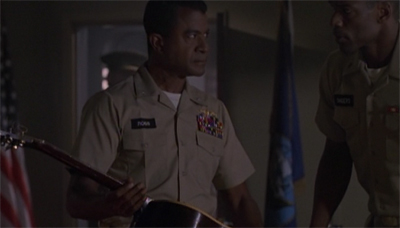
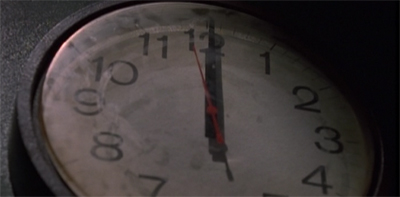




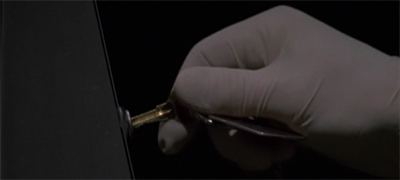


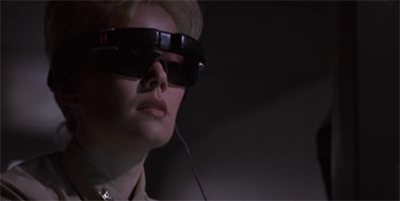

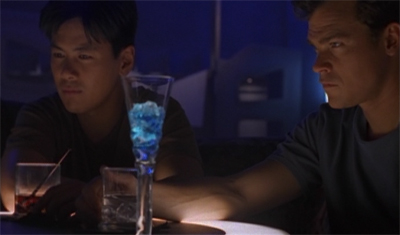




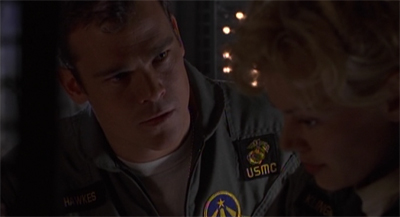






Leave a comment